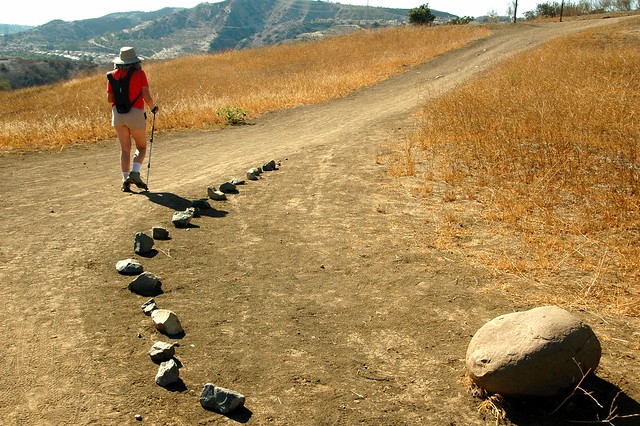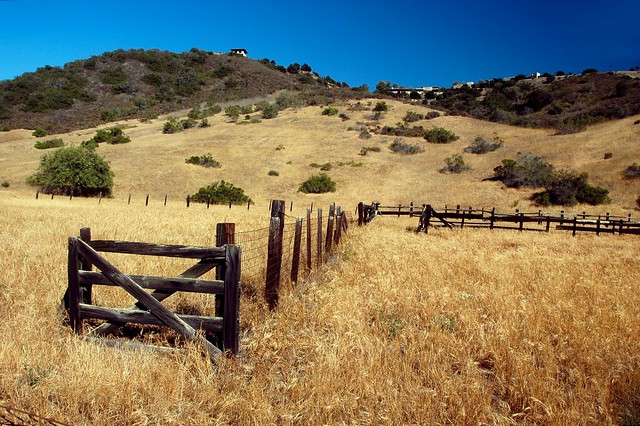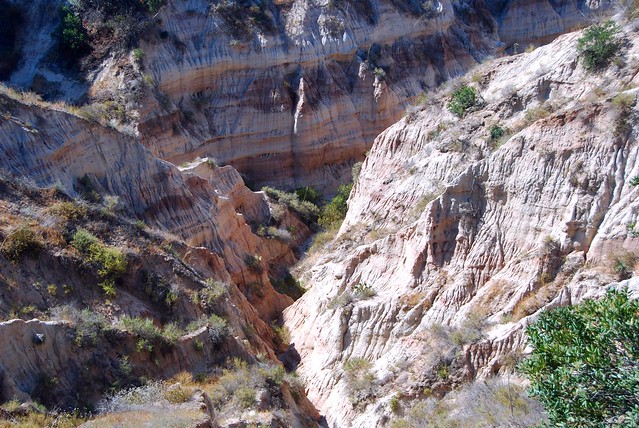Category Archives: Forests
The Summer Desert of Santiago Oaks
We’d never been to Santiago Oaks Regional Park even though we’d lived only half an hour away, so we laded ourselves with plenty of water and drove down Santiago Canyon Road to find it. After nearly missing the turn, we followed a confusing set of bends through a wealthy neighborhood that brought us to the main gate and the parking lot.
Eucalyptuses dominated the forest. Pines and a couple of exotics that I did not recognize filled much of the space. Laurels and sycamores thronged the wash. Oaks seemed scarce aside from a few oft-photographed trees along the Santiago Creek Trail and a few youngsters planted as part of a restoration project.
Strange Wilderness
One short spur trail makes all the difference in the Aliso and Wood Canyons Wilderness Park. When I ascended the Wood Creek Trail to get a view of the canyon beyond, I saw that the trail climbed further and then cascaded down in a series of stairs that I thought would take me back to the main trail. Lynn would not be happy with this country, I realized, so I directed her to go back to the Wood Canyon Trail and wait for me at the first sign she found. The trail — marked “easy” on the maps — dropped into a live oak forest along the creek but where was the main route? The path jumped and swerved along the west bank of the creek — which was fed by water from adjacent housing tracts — over three or four bridges until it finally crossed back and rediscovered the road after about half a mile.
Orange County Parks rules by a strange definition of wilderness. There is no buffer between the suburban and the canyon landscapes. Houses encroach on the very fringes of its wilderness parks. The water on which the plants and wildlife depend comes from the runoff of residential irrigation systems. Concrete aprons permit easy fording of streams. Mountain bikers rocket by with the perennial cry of “On your left! On your left!” Rangers patrol in pickups. A dilapidated wooden corral holds the golden grass that the ranchers seeded to overwhelm the bunch grasses and sedges native to these fields.
Wavy Water
Our midweek adventure — a scheduled event of the Irvine Ranch Natural Landmarks conservancy — took us four and a half hours to finish, counting the short breaks at The Sinks and Box Spring. The trail began at a notorious local dead end. We followed the water lines up Agua Chinon (“wavy water”) Canyon with no real trouble until we hit a steep loma as hellish as the south slope of Whiting’s Dreaded Hill. The summit brought us face to face with the western section of The Sinks
An inland sea or lake deposited the layers that appear in The Sinks formation about 40 million years ago. A long period of wet weather — sometime in the last million years — super-saturated the hills and caused the looser soil to slide away. The badland that was left exposed layers of harder red and white sediments that draw hikers and bikers to special “open days” at the Limestone Canyon Wilderness Park.
Continue reading





